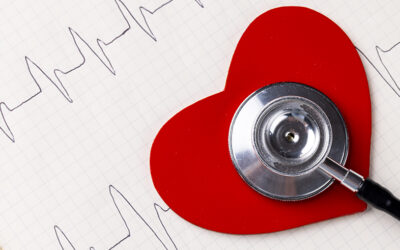Perimenopause: The Road to Menopause
What is perimenopause?
When the ovaries gradually make less estrogen and physical symptoms begin appearing (usually about 4-8 years before menopause), it is known as perimenopause. When the ovaries stop releasing eggs it is over and menopause has begun. The word perimenopause means “around menopause” and is the natural transition that most women until there is an official end to their reproductive years.
Estrogen, progesterone, testosterone, and FSH
Estrogen is the primary “female” hormone that during prime reproductive years rises and falls during menstruation. However, during perimenopause, estrogen slowly declines. Estrogen is responsible for female reproductive organs and moisturizes the vagina.
Testosterone (a male androgen hormone) and progesterone (a female hormone) are both produced by the ovaries as well and change during perimenopause. This is why some women experience a lower sex drive or libido. Progesterone is used by the uterus to prepare the lining for the fertilized egg. During perimenopause lack of this hormone can cause periods to become heavy, irregular and longer. Testosterone plays a role in estrogen production, helps with libido and maintains bone and muscle mass. However, ovaries continue to make testosterone after estrogen production stops.
FSH or follicle-stimulating hormone is produced by the pituitary gland. During perimenopause, these levels can fluctuate greatly. When FSH levels go up, the ovaries respond by producing more estrogen. When the levels go down, the estrogen levels go down.
What are perimenopause symptoms?
These symptoms can be different in severity and occurrence, as well as differ from woman to woman:
- Irregular periods
- Vaginal dryness
- Hot flashes
- Chills or “cold flashes”
- Night sweats
- Sleep issues
- Insomnia
- Mood changes
- Irritability
- Weight gain
- Slower metabolism
- Loss of breast fullness
- Thinning hair
- Dry skin
- Low sex drive.
Perimenopause hot flashes
People associate hot flashes with menopause, but many women experience it far before their period ends. While they are a normal part of perimenopause, these can also be induced by surgery and chemotherapy drugs.
Hot flashes last one to five minutes and come on quite suddenly. During this time, the sense of warmth can feel like “fire”. Usually affecting the face and upper body; hot flashes can also be combined with sweats, chills, and confusion. Hot flashes are caused by estrogen changes in the body, and this fluctuation causes the body to have trouble regulating body temperature.
Interestingly, studies show that while American women often have hot flashes; many Japanese, Korean and Southeast Asian women do not report hot flashes as a symptom. In fact, there is no Japanese word for hot flashes! This has been attributed to cultural dietary difference – by eating more plant-based foods, including soy; as well as foods rich in calcium, magnesium and vitamin E.
Foods that help decrease hot flashes and night sweats:
- Soybeans – soy contains genistein and daidzein compounds.
- Edamame and tofu – soy foods that contain phytoestrogens that mimic biological estrogen.
- A Mediterranean diet containing lots of vegetables, whole-grains and red wine.
- Garlic – contains phytoestrogens like soy.
- Mushrooms – especially maitake and shiitake – they contain selenium.
- Vitamin C fruits and veggies – such as yellow bell peppers, strawberries, pineapple, and melon – help prevent chemical changes to estrogen.
- Note: Reduce coffee – studies show that caffeine can cause more hot flashes.
Other perimenopause symptoms
- Vaginal dryness – lower estrogen levels can cause thinning and drier vaginal tissues. This can also cause itchiness and irritation. Sexual intercourse can become painful. Vaginal moisturizers, lubricants, and continued sexual activity seem to help.
- Irregular periods, heavier bleeding, and hormonal irregularities – Low-dose birth control can help regulate periods and suppress ovulation.
- Sleep issues – many women find their sleep is disrupted by perimenopause; however, sleep cycles change as we age for both genders.
- Mood – there is no proof that menopause is linked to depression or anxiety. Often there is a history of depression, poor health and life stress at midlife that is the culprit.
- Another sign of aging that has been wrapped up with perimenopause is short-term memory and concentration issues.
Herbs and supplements that help with perimenopause
- Black cohosh – has been used traditionally for centuries to reduce hot flashes and shown in studies to be quite effective. Black cohosh can also be used for vaginal dryness as a cream. This is one of the safest and most researched herbs for menopause.
- Hops or humulus lupulus – is a plant-based estrogen and is used for hot flash reduction.
- Red clover – contains isoflavones that help with both the severity and number of hot flashes and night sweats – especially after 8 weeks.
- Dong Quai – has been used in traditional Chinese medicine for menopause and menstrual irregularity. It is also used for hot flashes.
- Evening primrose – Used to reduce hot flashes and for premenstrual breast pain.
- Korean ginseng – helps reduce fatigue, improves concentration and increases vitality. May also improve sexual drive in women.
- Lemon balm or Melissa officinalis has been used for over 2000 years for mood support, memory support and insomnia.
- Linseed or flaxseed – contain phytoestrogens, also known as lignans (plant-based female hormones). Linseed has been found to reduce vaginal dryness.
- Chamomile – helps with relaxation and can be helpful for sleep issues and stress reduction.
- Red Clover – contains phytoestrogens (plant-based female hormones) called isoflavones and has been shown to reduce hot flashes.
- Shatavari or asparagus racemose – is a traditional Ayurvedic herb used as a female tonic. Translated it means “she who possesses a hundred husbands” and is used traditionally for libido.
- Valerian – used to support sleep and often effective for sleeplessness and insomnia.
Coping with perimenopause can be challenging, especially when it can last for years and symptoms can come suddenly without warning. The hormonal changes during the transition to menopause can also mean a mindset adjustment to the aging process as a woman. This can be an important time of reflection and self-compassion while you navigate the end of your fertile years and embark on the journey of perimenopause.
Other ways to cope mentally, emotionally and physically
- Meditation – 10 minutes a day can make a real difference to alleviate the stress of major life changes.
- Exercise – physical activity reduces stress.
- Set goals – think about what you did not have time to do earlier in your life and what you look forward to doing. Remember old hobbies you put down that you still may be interested in or take that trip you always wanted to take. This will help you reflect on your life and the dreams you continue to aspire to.
- Friends and family – reach out to friends and family. Find a social group. See a therapist. Take the time to surround yourself with a support network while you go through some less than desirable symptoms and changes in your life.
- Water – water replenishes you after a hot flash and helps to regulate your body’s temperature.

Jemile earned a degree in Food Studies and Writing and has worked for almost 23 years in the medical and health industries. She has been a digital marketing consultant for Acupuncture Atlanta since 2011 as the social media manager and content manager. Writing has been a childhood dream for Jemile and writing daily for clients in the health, wellness, food, and art industries have been phenomenal. Jemile is originally from Brooklyn, NY, and lives in the Hudson Valley, NY. She lives with her husband, two daughters, her dog, and two fish. You can contact Jemile via Linkedin, her mom blog, or her website, lunaroseconsulting.com



